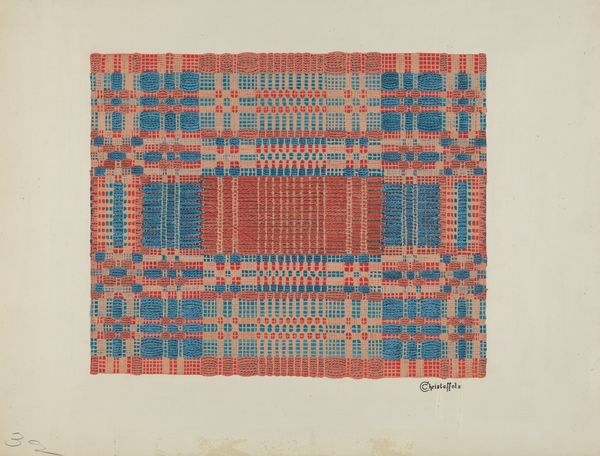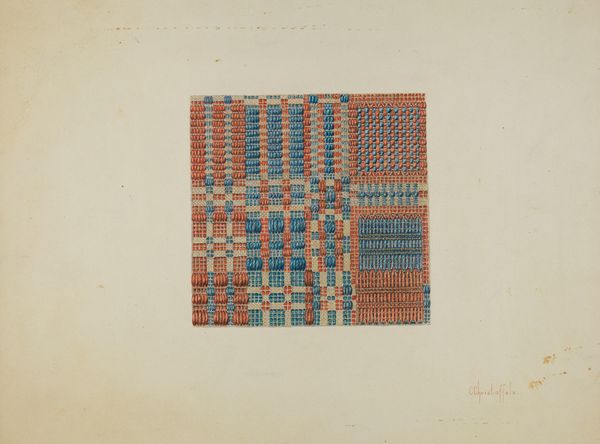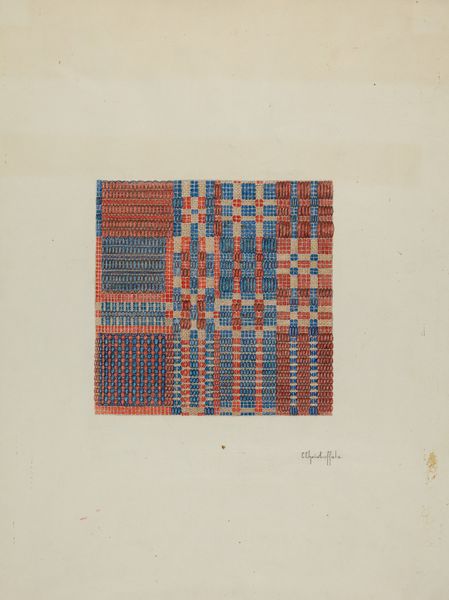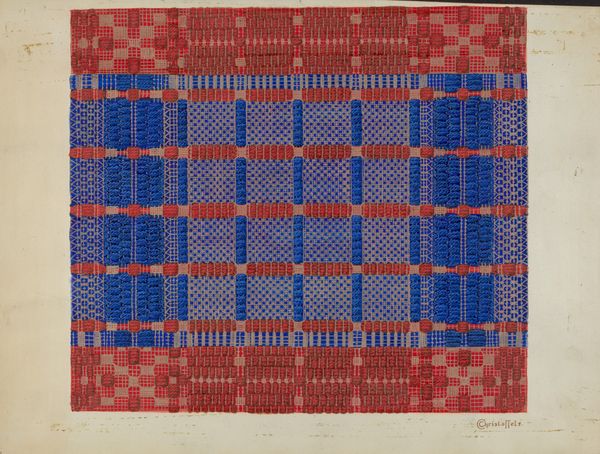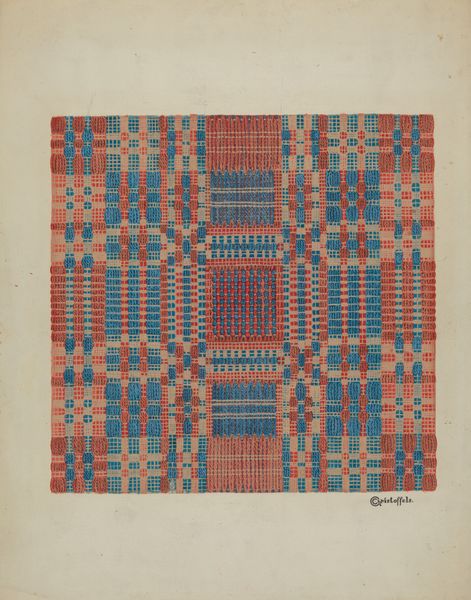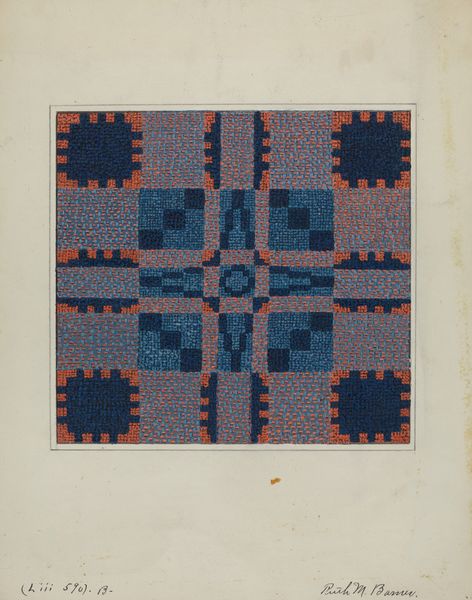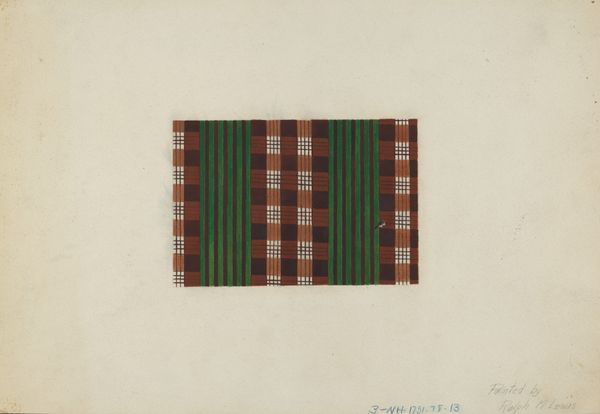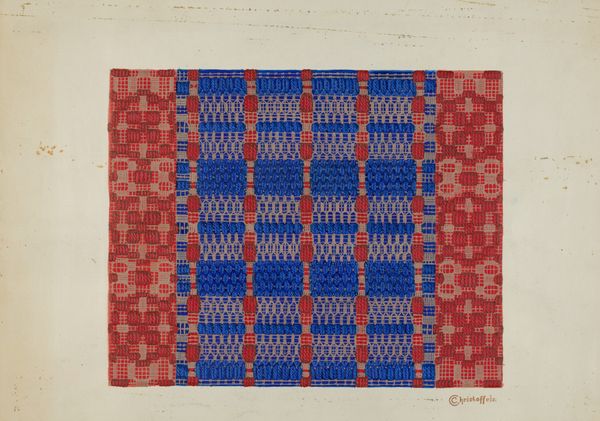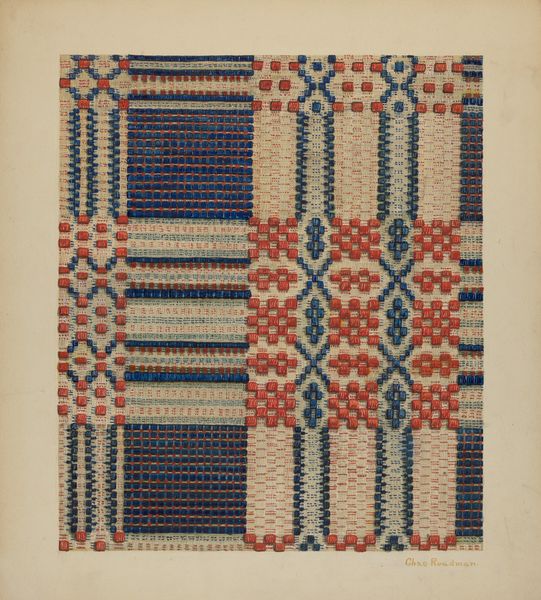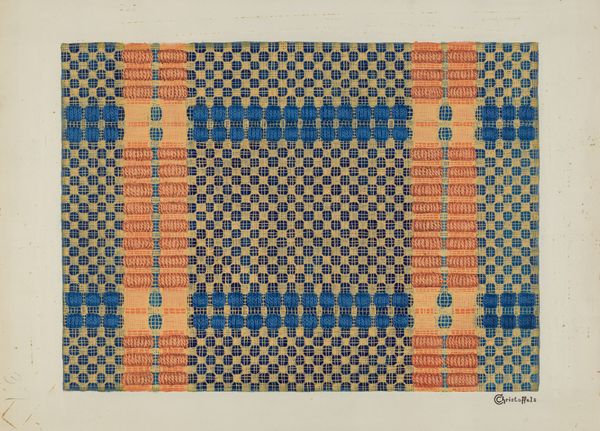
drawing, mixed-media, textile, paper, watercolor
#
drawing
#
mixed-media
#
water colours
#
pattern
#
textile
#
paper
#
watercolor
#
geometric
#
watercolor
Dimensions: overall: 28.1 x 35.7 cm (11 1/16 x 14 1/16 in.) Original IAD Object: 72" wide; 96" long
Copyright: National Gallery of Art: CC0 1.0
Curator: I'm struck immediately by the almost dizzying intricacy. It feels both ordered and chaotic, a very curious effect. Editor: What we’re seeing is a drawing, dating from 1935-1942, of a coverlet section, rendered with watercolor and other mixed media on paper. The artist is Cornelius Christoffels. These coverlets, often hand-woven, played an important role in domestic life and cultural expression, particularly within certain communities. Curator: Ah, a coverlet section. Suddenly that patchwork aesthetic makes perfect sense! I was busy thinking about digital pixelation or even minimalist grids. But there's a definite warmth here—nothing like a computer rendering. Editor: Precisely. These weren't mass-produced; they were labors of love, infused with personal narratives and skills passed down through generations. We often see similar examples of fractal geometry appear within artworks and patterns from indigenous or oppressed peoples across the globe. Curator: You can almost feel the texture just by looking at it! Those carefully chosen blues and reds, not too bright, just… present. But given it's a drawing of a textile and not an actual textile, how do you approach understanding it? Is it documentary? An exercise in design? Editor: All of the above, perhaps. Part of understanding artwork like this lies in knowing how such drawings were often used – sometimes for record keeping, sometimes for planning more elaborate designs, other times as items for trade. In the thirties and forties in the United States, many artists, craftspeople and ordinary citizens had their ways of dealing with the rise of factory production and pre-fabricated goods. Curator: A way to preserve craft... I guess that impulse hasn’t changed much! In this piece, the intersection of fine art and domestic craft really comes through, I am ready to see the full blanket version next! Editor: It speaks to a yearning for handmade, unique objects. Studying art such as this provides great opportunities for seeing art as intrinsic with history and life. Curator: For me it certainly emphasizes the human ingenuity embedded within a piece as "simple" as a blanket or coverlet. We make ourselves by making things, it would seem.
Comments
No comments
Be the first to comment and join the conversation on the ultimate creative platform.
